One analyst’s attempts to demystify the types of traffic Google sends publishers
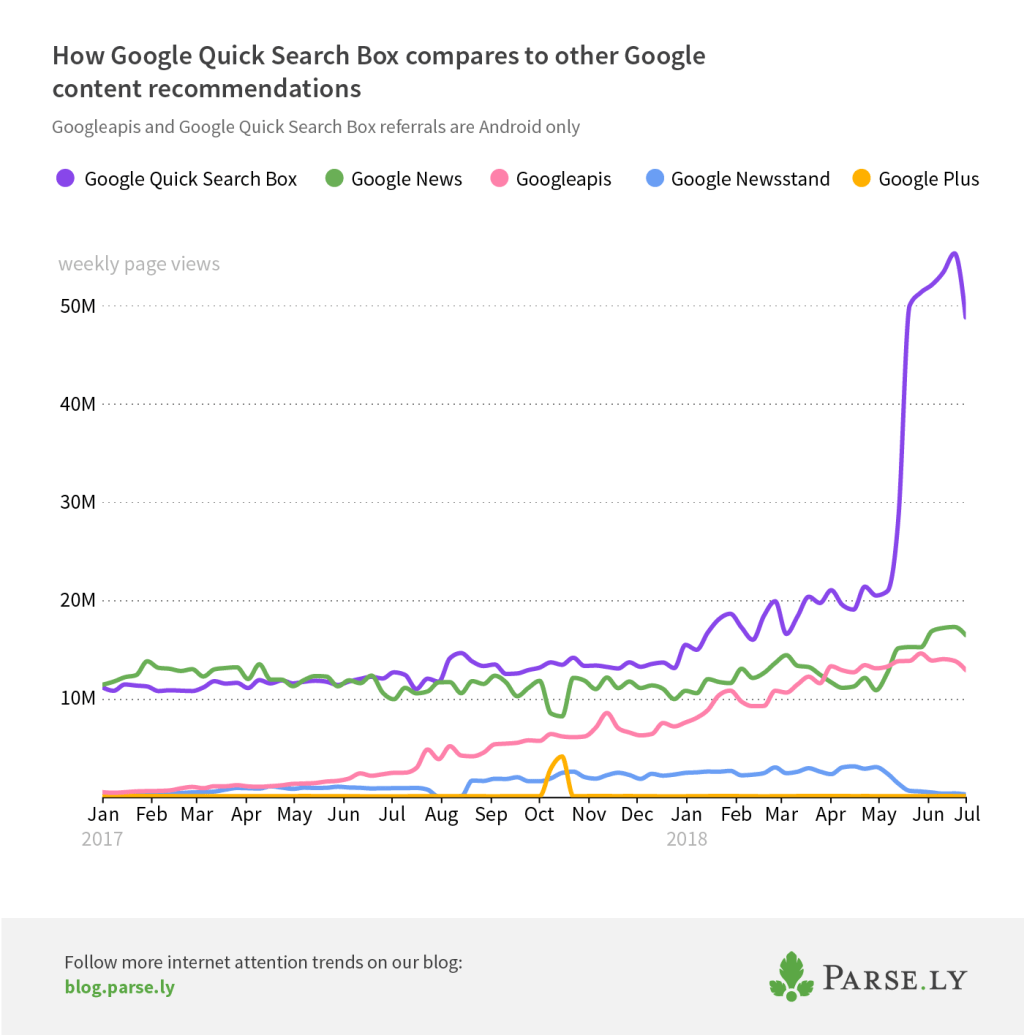
I really love it when one of my go-to news sources sneaks its way into my periphery with a new way of telling a story—a new podcast or app, or really any rich new content format. As an Android user, I’ve been noticing Google’s finding all sorts of ways to sneak in more recommended content, and not just in search results.
I started investigating Google’s referring urls. Those recommended content elements I was noticing on my phone? They’re all from the same referring url: Google Quick Searchbox, or GQSB.
So what exactly is GQSB and how does its growth compare to Google News? What’s the deal with googleapis since my last analysis? And most importantly, how can publishers identify and gain exposure on these products? (Spoiler alert: Prepare for another discussion about AMP.)
As Google optimizes its content-based products, I wanted to understand what’s driving traffic and what you should do to get on board. Here’s where my analysis took me.
View related pages:
From a user perspective, sometimes it felt obvious why I was being served certain content—I searched for something, read it, and scrolling up ever-so-slightly on the page, was served very relevant related articles.
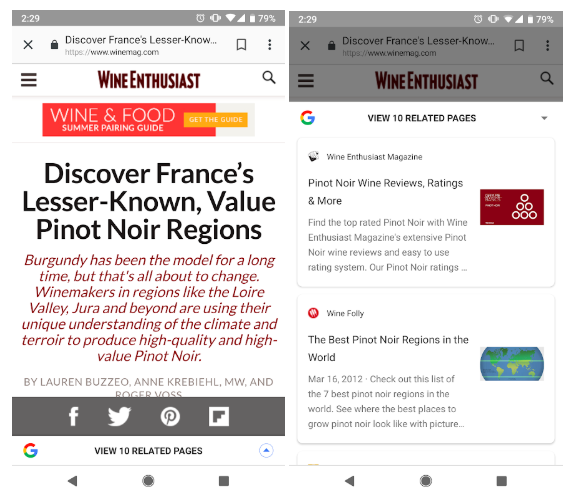
I noticed that sometimes the recommended content was from the same source, and sometimes I got a variety. I also noticed that this didn’t ever happen in the Chrome app; it was in Google’s weird little webview, the purgatorial browser between search and site.
Check out your feed:
Then Google suggested “Check out your feed,” based on past search queries….
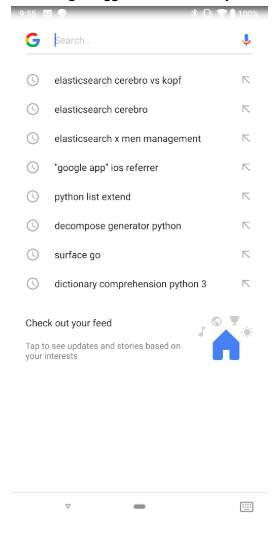
Left of home feed:
…which got me thinking about my beloved left-of-home feed—so perfectly curated and relevant, as if Google has known me for years.
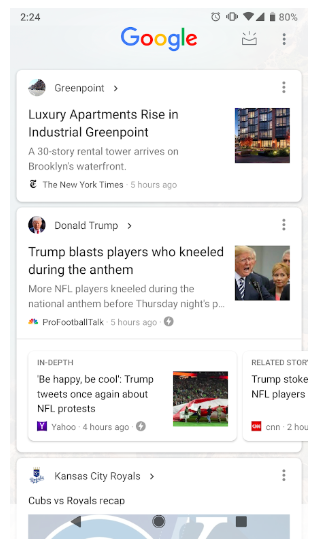
So much content! So many ways to get it! How can I track this tapestry of Google traffic?
A grey area with Google: GQSB
Sometimes querying Google’s referring urls feels a bit like talking to an oracle: never explicit, sifting through circular gibberish. Imagine my surprise when I found that the three content recommendation types that caught my eye all send the same referrer: android-app://com.google.android.googlequicksearchbox (or some variation thereof).
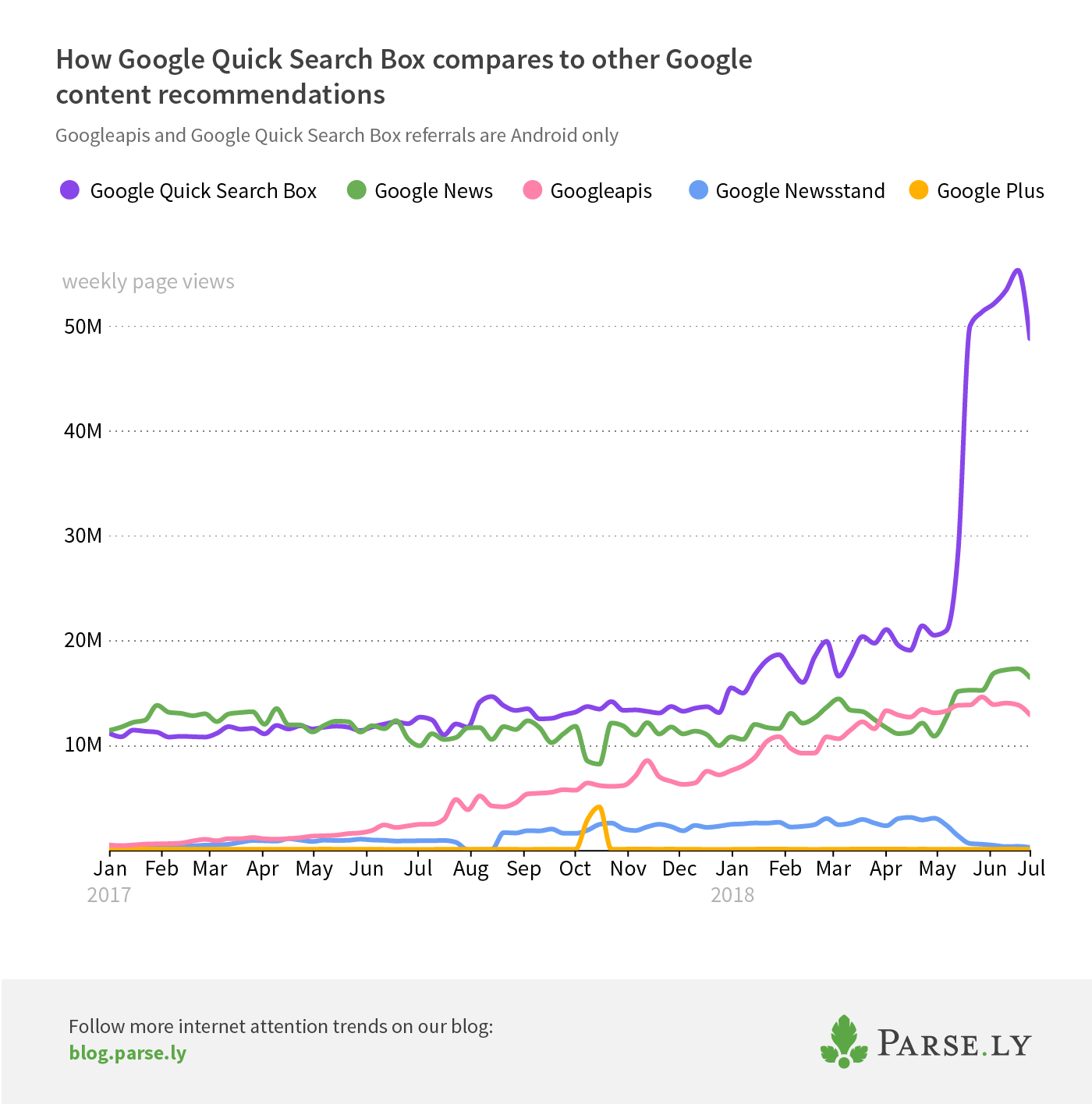
This referring URL also made a brief appearance in 2016, and then quickly disappeared as the traffic returned to “direct.” But this time, these aren’t from the search box! For the sake of this article, I’m going to call it by its old nickname, GQSB. GQSB was previously understood to be only organic search from the search bar widget on mobile devices, but now it’s a blend of search box and recommended content. That includes, but maybe is not limited to:
- “View Related Pages.” This appears in a Google webview—not Chrome—on both AMP and non-AMP pages.
- “Check out your feed” at the bottom of search inputs. This takes you to “interest-based” content cards.
- Left-of-home swipe cards. (Note: These cards aren’t related to the googleapis referrer, and we’ve clarified that in this post.)
It would be easy to lump all of this together as search traffic because a lot of it is still a click from the actual search box. But it’s indistinguishable from the url sent by what is clearly recommended, not-searched-for, content. That is: I’m not actively searching for a particular topic; I’m being recommended content based on my past search history, or at least based on what I’m currently reading.
And here’s why we should care about it: GQSB recs have dwarfed all our other Google content recs. (And that spike in May is all AMP. Color me shocked.)
So if GQSB is the referring domain sending the most traffic, what’s going on with Google News and googleapis?
In May, Google News took over from Googleapis as the fastest growing Google content recommender
While GQSB recommends content, it’s not an aggregator in the same way that Google News and googleapis are. So while GQSB is sending more traffic, Google News takes the title of fastest growing Google content recommender thanks to a change made in May.
Up until then, Google recommended content across three main products:
- Google News (news.google.com)
- Google Play Newsstand (play.google.com)
- in-app Chrome recommendations (googleapis.com)
In May 2018, Google merged their Play Newsstand app with Google News, creating a single, streamlined news aggregator for desktop, mobile, and app.
It makes sense that Google should merge these two practically identical products. In mid-2017, Google News was quietly losing traffic. Meanwhile, Google Newsstand was slowly but surely inching upwards. Since merging, Google News is the fastest growing Google content recommender, growing at a faster rate than googleapis. Today, Google News is the largest and fastest growing Google news aggregator, with 60% mobile traffic. Oh, and about that mobile traffic: it is 85% AMP, and growing.
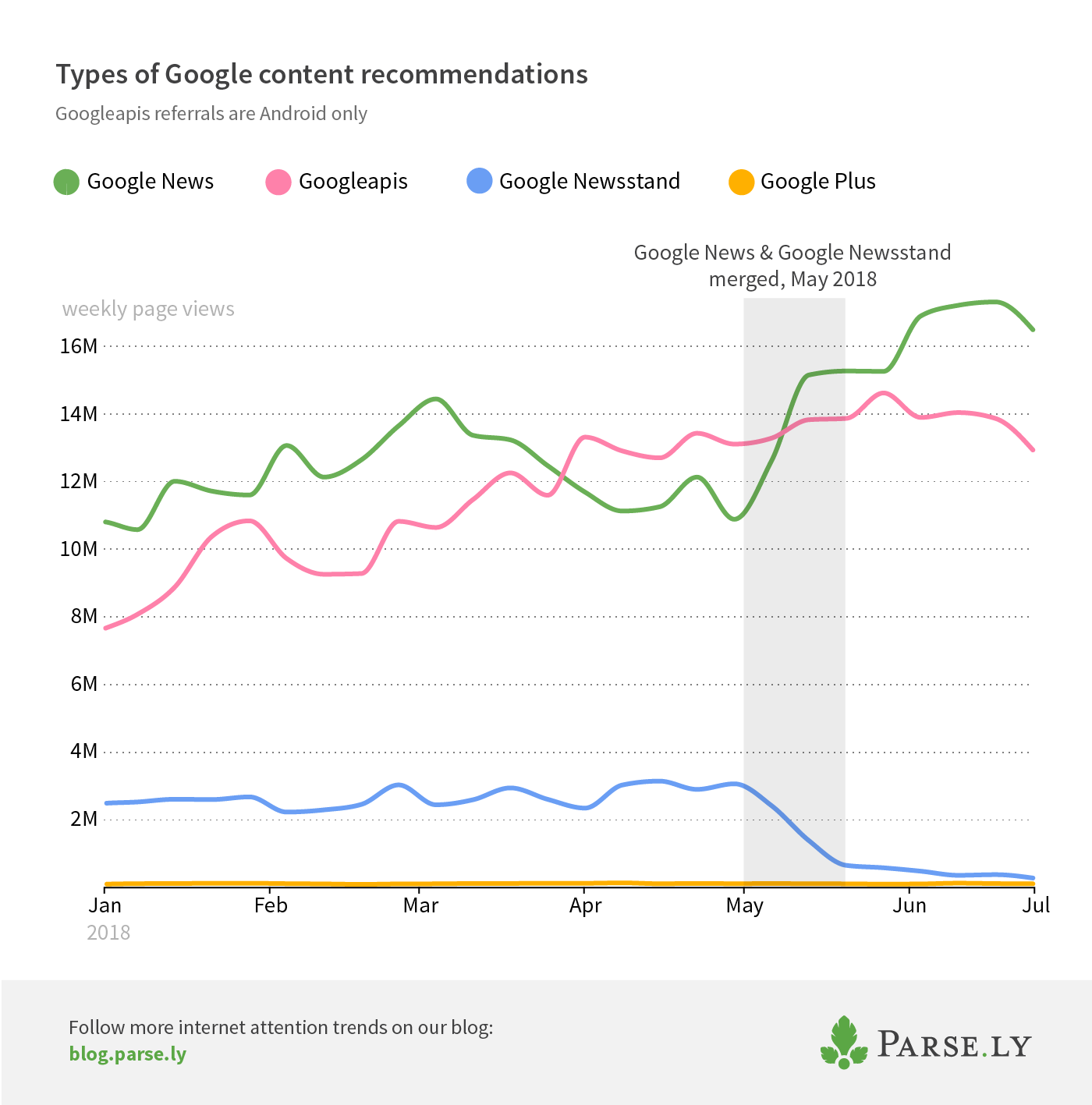
In May 2018, Google News traffic jumped up 25.7% from the previous month. Over the summer months, Google News average month-over-month percentage growth has remained in the double-digits. Meanwhile, googleapis has stalled to single-digit 2.4% growth. Merging Newsstand brought a dormant Google News back to life.
Needless to say, May to August 2018 has been an interesting period for Google content recommendations. It may be hasty to say whether the rate of change will continue, but worth watching.
Google News growth is all mobile
Not only does de-duplicating similar products just make sense, but merging products indicates Google’s investment in growing the Google News mobile offering.
So let’s unpack the growth that happened post-merger. While the uptick in Google News mobile referrers (after merging a mobile app) is expected, mobile traffic took off. In January 2018, Google News was 40% mobile traffic. Now it’s nearly 60% mobile.
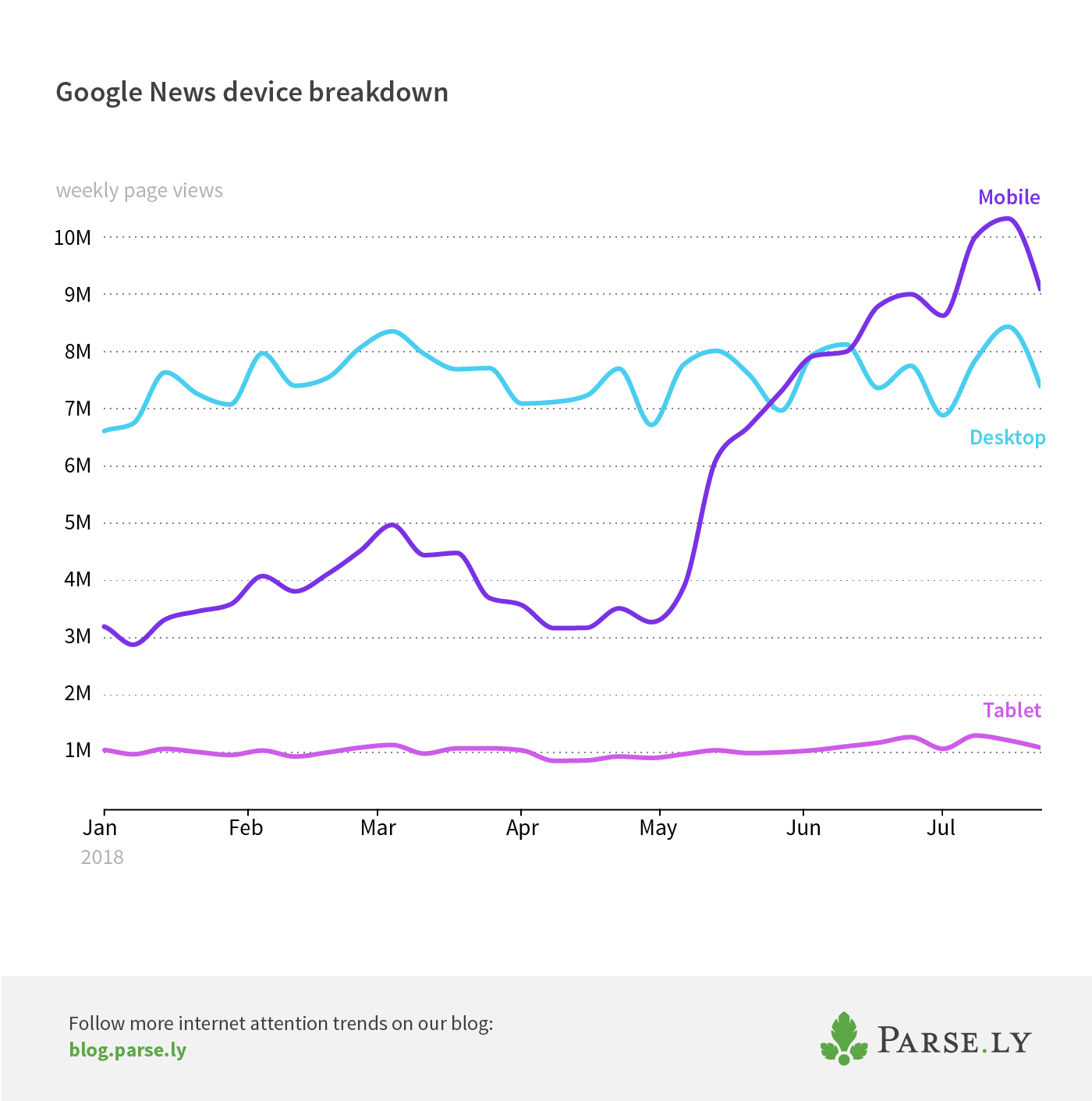
This indicates that not only does Google News prefer AMP content, it may be deprioritizing non-AMP content (or if it’s not actively deprioritizing it, the content is at least not getting traffic anymore, which has a similar outcome for publishers).
Google News growth is all mobile, and Google News mobile growth is all AMP (similarly to Google Search), yet its desktop traffic remains steady. While Google News on desktop remains a reliable source of traffic, we can’t say the same for non-AMP traffic, which takes a hit.
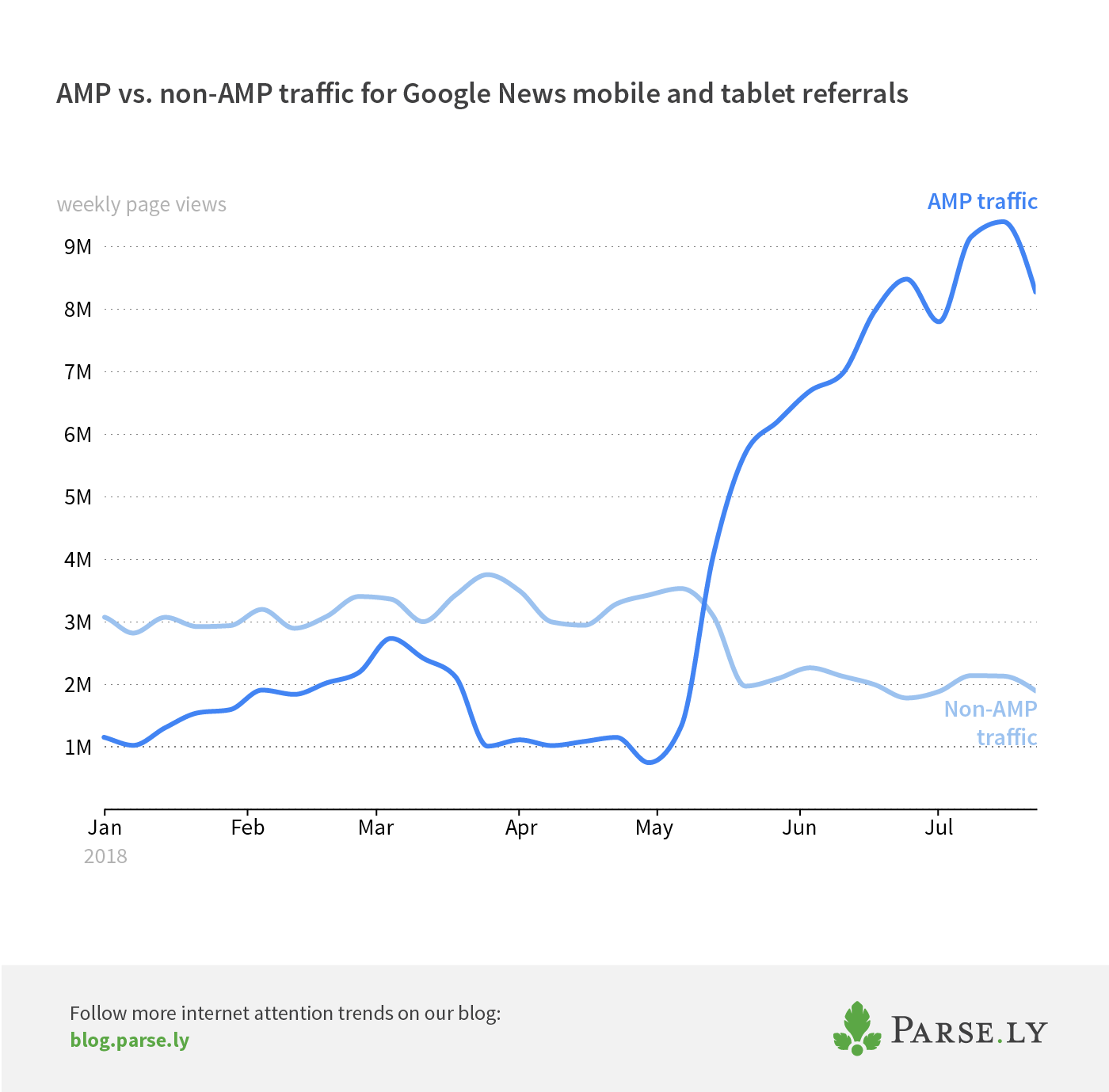
If this downward trend in non-AMP Google News traffic continues, then you could argue that in a couple months, if you’re not on AMP, then you’re not on (mobile) Google News.
Maybe Google News mobile growth will stabilize itself on top, and Google News across all devices will settle back in as a steady-as-she-goes referral source. And before I start humming along to The Raconteurs, it’s worth noting: it doesn’t matter if I report on Google News being the next big thing if, by not using AMP, you’re not able to take advantage of its growth.
Googleapis deserves a shout-out here for exactly this reason. It’s still split between AMP vs. non-AMP traffic, which means publishers don’t have the same pressure to be on AMP in the case of googleapis. However, don’t hold your breath on that trend staying the same if the other recommending services are an indication.
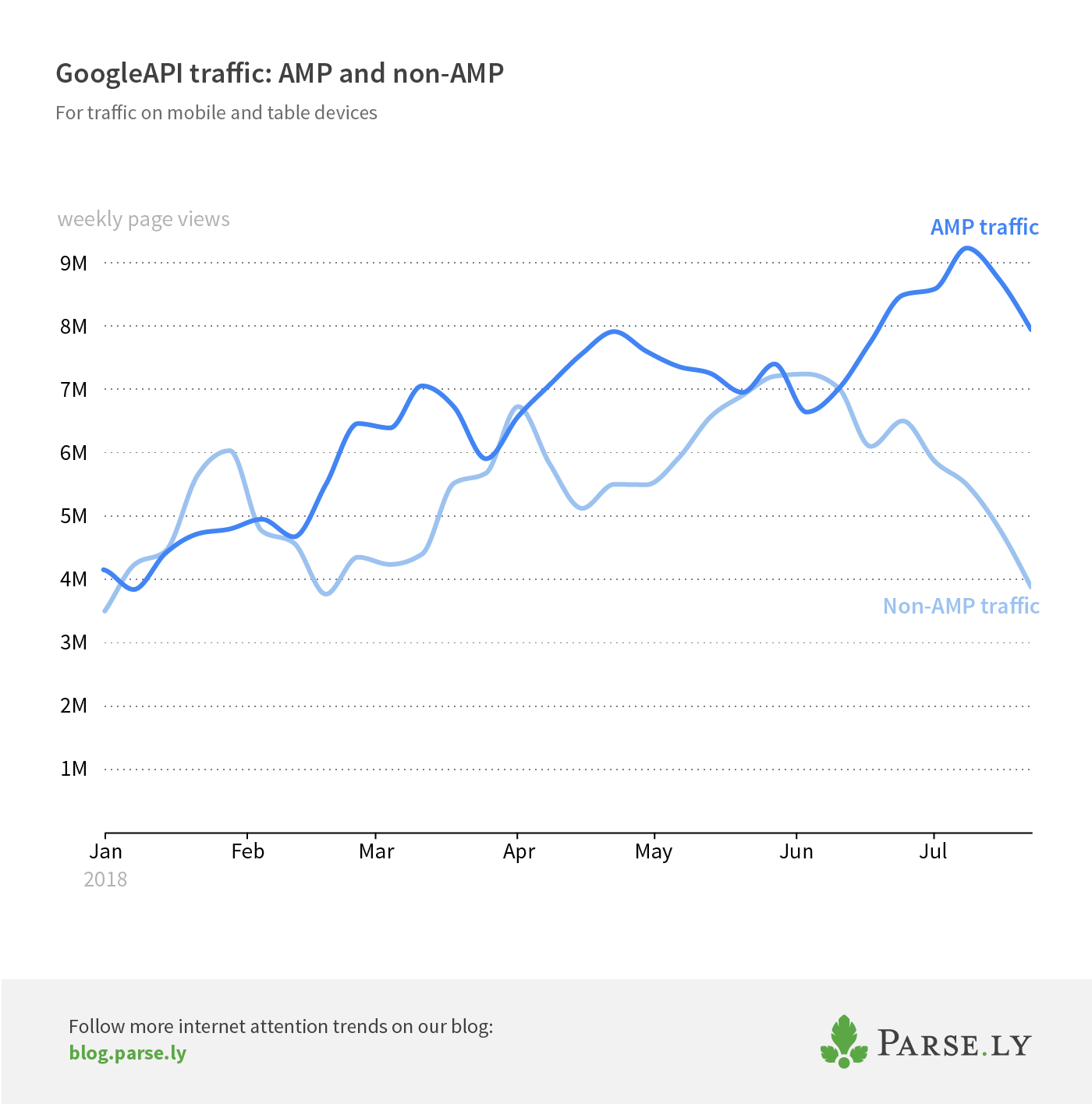
All things circle back to AMP
As a user, I love Google News, and apparently I’m not alone. I appreciate that Google combined two very similar products that I didn’t really need two of. And as a media analyst, I’m keeping my eye on GQSB.
Google offers clear direction and measurement for its Google News product: its growth is mobile, and its mobile growth is AMP. Google has insisted that AMP articles do not get preferential treatment in search results, and in overall search that may still be true. But as far as GQSB and Google News goes, all I know is that we need to AMP it up.
Want data like this sent to you as soon as we publish it? Make sure to sign up for our data newsletter in the form below to get it! And read our latest story on 2018 referral growth trends.